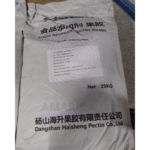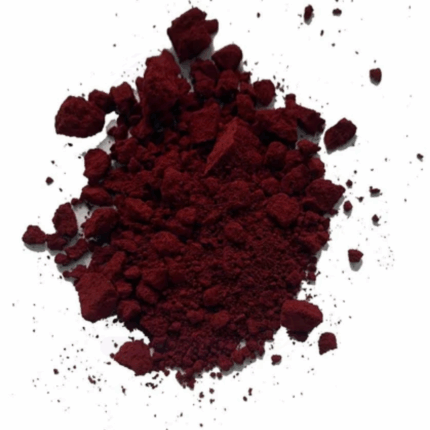Pearlizer
Whatsapp Order
Pearlizer (UFABLEND) is a specialized additive designed to impart a lustrous, pearlescent finish to a variety of coatings, paints, cosmetics, and plastics. It enhances the aesthetic appeal by creating shimmering and iridescent effects through the controlled dispersion of mica, titanium dioxide, or other pearlescent pigments. Pearlizer (UFABLEND) offers excellent compatibility with different formulations, providing stability and improved visual effects.
Category: Colorants (Pigments, Dyes)
Tags: Cosmetic Pearlizer, Pearlescent Additive, Pearlizer, Thickener, UFABLEND Pearlizer
Description
Table of Contents
Toggle
Pearlizer (UFABLEND)
Primary Uses
- Coatings and Paints
- Used in automotive, industrial, and decorative coatings to provide a pearlescent, glossy finish.
- Enhances exterior durability and visual appeal of architectural paints.
- Cosmetics
- Incorporated into makeup products such as eyeshadows, lipsticks, and nail polishes for shimmer and shine.
- Used in skincare formulations to add a radiant glow or illuminating effect.
- Plastics and Polymers
- Added to plastic compounds and masterbatches to produce pearlescent effects in molded or extruded products.
- Used in packaging materials for premium visual appeal.
- Printing Inks
- Utilized in specialty printing inks for luxury packaging and labels to create iridescent finishes.
Secondary Uses
- Textiles
- Applied as a finishing agent in textile coatings to impart a pearlescent sheen.
- Crafts and Art Supplies
- Used in craft paints and resins for decorative and artistic effects.
- Household Products
- Included in waxes, polishes, and detergents to improve gloss and sheen on surfaces.
- Food Industry (Limited Use)
- In very low concentrations and approved grades, used as a decorative effect in confectionery and edible coatings (subject to regulatory approval).
KEY PRODUCT FEATURES
1. Basic Identification Attributes
- Chemical Name (IUPAC): Pearlescent pigment dispersion (varies by formulation)
- Common/Trade Name: Pearlizer (UFABLEND)
- CAS Number: Proprietary mixture
- HS Code: 3206.49.00 (Other pigments)
- Synonyms: Pearlescent additive; pearlescent pigment dispersion
2. Physical & Chemical Properties
- Physical State: Liquid or paste dispersion
- Color & Odor: Milky white to translucent; mild or no odor
- pH: Typically 6.0 – 8.0
- Solubility: Dispersible in water or solvents depending on formulation
- Density: Approx. 1.0 – 1.2 g/cm³
3. Safety & Hazard Attributes
- GHS Classification: Generally non-hazardous
- Toxicity: Low toxicity; avoid inhalation of powder forms
- Exposure Limits: Standard industrial hygiene practices recommended
4. Storage & Handling Attributes
- Storage Conditions: Store in a cool, dry place away from direct sunlight and freezing temperatures
- Container Type: Supplied in drums, pails, or plastic containers with airtight seals
- Shelf Life: Typically 12 months if stored properly
- Handling Precautions: Avoid skin contact and inhalation of aerosols or powders
5. Regulatory & Compliance Attributes
- Complies with relevant pigment and cosmetic additive standards
- Approved for use in coatings, plastics, and cosmetics by international regulatory bodies
- Meets REACH and other chemical safety regulations
6. Environmental & Health Impact
- Biodegradability: Not readily biodegradable due to mineral pigment content
- Ecotoxicity: Low environmental risk under normal use and disposal conditions
- Bioaccumulation: Not expected
- Safety: Minimal risk if handled according to guidelines
SAFETY HANDLING PRECAUTIONS
Safety Handling Precautions
- PPE Required: Gloves, safety goggles, and dust mask when handling powders or concentrates
- Handling Guidelines: Use in well-ventilated areas; avoid inhalation of airborne particles
- Storage Measures: Keep containers tightly closed and stored away from incompatible materials
First Aid Measures
- Skin Contact: Wash thoroughly with soap and water
- Eye Contact: Rinse with plenty of water for at least 15 minutes; seek medical attention if irritation persists
- Inhalation: Move to fresh air if irritation occurs; seek medical help if symptoms persist
- Ingestion: Rinse mouth; seek medical advice if symptoms develop
Firefighting Measures
- Fire Hazards: Non-flammable
- Extinguishing Media: Use water spray, foam, or dry chemical extinguishers for surrounding fires
- Special Precautions: Use standard protective equipment
- Hazardous Combustion Products: May produce fumes if organic solvents are present
Related products
Cetex Green Dye sdn Oil Soluble
Cetex Green Dye sdn oil soluble is a synthetic oil-soluble dye known for its vibrant green coloration and excellent solubility in oils, fats, and hydrocarbon solvents. It is widely used in industries requiring stable and intense green color in oil-based formulations. The dye exhibits good resistance to heat, light, and chemical exposure, making it suitable for applications in cosmetics, plastics, and inks. Cetex Green Dye SDN offers consistent color strength and dispersion in various oil mediums.
Green Pigment
Green Pigment is a concentrated dispersion of green pigment particles in a suitable carrier, designed for use in a variety of industrial and commercial applications. Known for its vivid green color and excellent stability, this pigment offers good resistance to heat, light, and chemicals. It is widely employed in plastics, coatings, inks, and other manufacturing processes where vibrant, durable green coloration is required.
Maltodextrin
Maltodextrin is a white, odorless, tasteless polysaccharide produced from partial hydrolysis of starch (typically corn, potato, rice, or wheat starch). It consists of short chains of D-glucose units and is classified by its dextrose equivalent (DE), typically ranging from 3 to 20. Maltodextrin is easily digestible, water-soluble, and has a mildly sweet to nearly neutral flavor depending on its DE value. It is widely used in food, pharmaceutical, and industrial applications as a filler, thickener, bulking agent, and carrier, owing to its excellent functionality and safety.
PIGMENT ORANGE 20%
Product Description
Pigment Orange 20% is a concentrated dispersion of synthetic orange pigment particles in a suitable carrier, designed to deliver bright, vivid orange coloration. It offers excellent stability, heat resistance, and chemical inertness, making it suitable for diverse industrial applications including paints, plastics, inks, and coatings. This pigment ensures consistent color strength and durability across a variety of substrates.
Solvent Red 2 Oil Soluble
Solvent Red 2 Oil Soluble is a synthetic dye renowned for its intense red coloration and excellent solubility in oils and organic solvents. It is widely used in industrial applications such as paints, coatings, inks, plastics, and fuel coloring. The dye offers strong tinting strength, good stability to light and heat, and vibrant color effects in non-polar mediums. Solvent Red 2 is supplied as a fine powder or concentrated liquid, making it suitable for various manufacturing and research uses requiring oil-soluble red pigments.
Sparkle 660 (Pearlizing Agent)
Sparkle 660 (Pearlizing Agent) is a specialized pearlizing agent used to impart a lustrous, iridescent finish to various products. It typically consists of micronized mica coated with titanium dioxide or other oxides to create a shimmering pearl effect. This additive is widely employed in personal care, cosmetics, and industrial formulations to enhance visual appeal with a pearlescent shine.
Waxol Solvent Red
Waxol Solvent Red is a synthetic dye primarily used for coloring hydrocarbon-based products. It is a solvent-soluble red dye known for its excellent color strength, stability, and compatibility with various waxes, oils, plastics, and fuels. This dye is widely employed in industries requiring vibrant red coloration of non-polar materials, providing consistent performance under different processing conditions.
Waxol Solvent Yellow 2
Waxol Solvent Yellow 2 is a synthetic solvent dye known for its bright yellow hue and excellent solubility in organic solvents such as oils, waxes, hydrocarbons, and plasticizers. It provides consistent and vibrant yellow coloration in solvent-based systems, making it suitable for use in plastics, inks, coatings, and lubricants. The dye offers good chemical resistance and lightfastness, ensuring durability and stability of color in industrial and decorative applications. Waxol Solvent Yellow 2 is widely used where water-soluble dyes are unsuitable, providing high tinting strength and compatibility with various non-polar substrates.


 Preservatives(food)
Preservatives(food) Flavor Enhancers
Flavor Enhancers Acidulants
Acidulants Sweeteners
Sweeteners Antioxidants
Antioxidants Colorants(food)
Colorants(food) Nutraceutical Ingredients (food)
Nutraceutical Ingredients (food) Nutrient Supplements
Nutrient Supplements Emulsifiers
Emulsifiers
 Collectors
Collectors Dust Suppressants
Dust Suppressants Explosives and Blasting Agents
Explosives and Blasting Agents Flocculants and Coagulants
Flocculants and Coagulants Frothers
Frothers Leaching Agents
Leaching Agents pH Modifiers
pH Modifiers Precious Metal Extraction Agents
Precious Metal Extraction Agents
 Antioxidants(plastic)
Antioxidants(plastic) Colorants (Pigments, Dyes)
Colorants (Pigments, Dyes) Fillers and Reinforcements
Fillers and Reinforcements Flame Retardants
Flame Retardants Monomers
Monomers Plasticizers
Plasticizers Polymerization Initiators
Polymerization Initiators Stabilizers (UV, Heat)
Stabilizers (UV, Heat)
 Antifoaming Agents
Antifoaming Agents Chelating Agents
Chelating Agents Coagulants and Flocculants
Coagulants and Flocculants Corrosion Inhibitors
Corrosion Inhibitors Disinfectants and Biocides
Disinfectants and Biocides Oxidizing Agents
Oxidizing Agents pH Adjusters
pH Adjusters Scale Inhibitors( water)
Scale Inhibitors( water)
 Antioxidants(cosmetic)
Antioxidants(cosmetic) Emollients
Emollients Fragrances and Essential Oils
Fragrances and Essential Oils Humectants
Humectants Preservatives
Preservatives Surfactants(cosmetic)
Surfactants(cosmetic) Thickeners
Thickeners UV Filters
UV Filters
 Fertilizers
Fertilizers Soil Conditioners
Soil Conditioners Plant Growth Regulators
Plant Growth Regulators Animal Feed Additives
Animal Feed Additives Biostimulants
Biostimulants Pesticides (Herbicides, Insecticides, Fungicides)
Pesticides (Herbicides, Insecticides, Fungicides)
 Active Pharmaceutical Ingredients (APIs)
Active Pharmaceutical Ingredients (APIs) Excipients
Excipients Solvents(pharmaceutical)
Solvents(pharmaceutical) Antibiotics
Antibiotics Antiseptics and Disinfectants
Antiseptics and Disinfectants Vaccine Adjuvants
Vaccine Adjuvants Nutraceutical Ingredients (pharmaceutical)
Nutraceutical Ingredients (pharmaceutical) Analgesics & Antipyretics
Analgesics & Antipyretics
 Analytical Reagents
Analytical Reagents Solvents(lab)
Solvents(lab) Chromatography Chemicals
Chromatography Chemicals Spectroscopy Reagents
Spectroscopy Reagents microbiology-and-cell-culture-reagents
microbiology-and-cell-culture-reagents Molecular Biology Reagents
Molecular Biology Reagents Biochemical Reagents
Biochemical Reagents Inorganic and Organic Standards
Inorganic and Organic Standards Laboratory Safety Chemicals
Laboratory Safety Chemicals Specialty Laboratory Chemicals(Special Laboratory Equipment)
Specialty Laboratory Chemicals(Special Laboratory Equipment)
 Demulsifiers
Demulsifiers Hydraulic Fracturing Fluids
Hydraulic Fracturing Fluids Scale Inhibitors(oil)
Scale Inhibitors(oil) Surfactants(oil)
Surfactants(oil) Drilling Fluids
Drilling Fluids
 Dyes and Pigments
Dyes and Pigments Bleaching Agents
Bleaching Agents Softening Agents
Softening Agents Finishing Agents
Finishing Agents Antistatic Agents
Antistatic Agents
 Admixtures
Admixtures Waterproofing Agents
Waterproofing Agents Sealants and Adhesives
Sealants and Adhesives Curing Compounds
Curing Compounds Concrete Repair Chemicals
Concrete Repair Chemicals Anti-Corrosion Coatings
Anti-Corrosion Coatings
 Surfactants(cleaning)
Surfactants(cleaning) Builders
Builders Enzymes
Enzymes Solvents (Cleaning)
Solvents (Cleaning) Fragrances
Fragrances
 Electronic Chemicals
Electronic Chemicals Catalysts
Catalysts Lubricants
Lubricants Photographic Chemicals
Photographic Chemicals Refrigerants
Refrigerants Automotive chemicals
Automotive chemicals Pyrotechnic Chemicals
Pyrotechnic Chemicals
 Biodegradable Surfactants
Biodegradable Surfactants Bio-based Solvents
Bio-based Solvents Renewable Polymers
Renewable Polymers Carbon Capture Chemicals
Carbon Capture Chemicals Wastewater Treatment Chemicals
Wastewater Treatment Chemicals
 Pigments
Pigments Solvents(paint)
Solvents(paint) Specialty Coatings
Specialty Coatings Binders/Resins
Binders/Resins Additives
Additives Driers
Driers Anti-Corrosion Agents
Anti-Corrosion Agents Functional Coatings
Functional Coatings Application-Specific Coatings
Application-Specific Coatings
 Fresh Herbs
Fresh Herbs Ground Spices
Ground Spices Whole Spices
Whole Spices Spice Blends
Spice Blends Dried Herbs
Dried Herbs
 Leavening Agents
Leavening Agents Dough Conditioners
Dough Conditioners Flour Treatments
Flour Treatments Fat Replacers
Fat Replacers Decoratives
Decoratives Preservatives(baking)
Preservatives(baking)
 Plasticizers & Softeners
Plasticizers & Softeners Reinforcing Agents
Reinforcing Agents Adhesion Promoters
Adhesion Promoters Vulcanizing Agents
Vulcanizing Agents Antidegradants
Antidegradants Blowing Agents
Blowing Agents Fillers & Extenders
Fillers & Extenders Accelerators & Retarders
Accelerators & Retarders

























